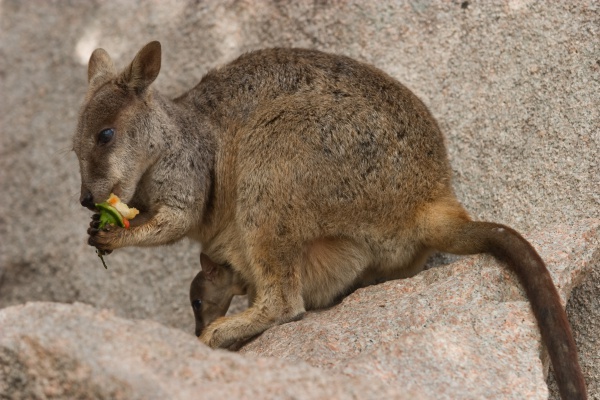Facts About Rock-wallaby
Rock-wallabies, members of the genus Petrogale, were first classified in 1837 by John Edward Gray. Gray initially identified the species Kangurus pencillatus, now known as Petrogale penicillata, as the type species. This genus is the most diverse among macropods, comprising 17 recognized species and potentially more awaiting classification. These medium-sized marsupials are adapted to life in rocky, rugged terrains and are noted for their nocturnal and highly territorial behavior. They typically reside in small groups or colonies, inhabiting loose boulder piles, cliffs, and isolated rock stacks.
Unfortunately, since European colonization, rock-wallaby populations have experienced a severe decline, with some species even facing local extinction. The primary causes of their dwindling numbers include habitat destruction, the introduction of invasive species such as foxes, competition from other herbivores, diseases, and genetic isolation.
To combat these challenges, conservation efforts focus on habitat preservation, pest management, captive breeding programs, and ongoing monitoring. These initiatives aim to prevent further extinctions and bolster wild populations. For example, conservation programs have successfully aided in the recovery of the yellow-footed rock-wallaby in New South Wales.
